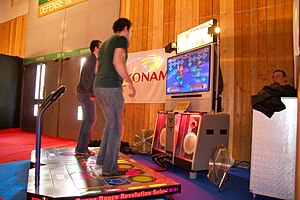 Image by BeFitt via FlickrThis study investigated pre-service teachers’ experience, motivation, passion, effort, and perspectives in playing exergames in the classroom using the self-determination theory as the main theoretical framework. One hundred forty pre-service teachers participated in the study. A mixed method was used. Data included pre-survey and post-survey results and classroom observation notes. Findings indicated that most pre-service teachers had little prior experience in exergames. However, they enjoyed playing exergames in the classroom and considered it beneficial to incorporate exergames in teaching. They also raised concerns, challenges, and the need for resources to effectively incorporate exergames in teaching. Findings also suggested that promoting pre-service teachers’ higher levels of self-determined motivation and harmonious passion may motivate them to be more active in exergames. Details are discussed in the paper.
Image by BeFitt via FlickrThis study investigated pre-service teachers’ experience, motivation, passion, effort, and perspectives in playing exergames in the classroom using the self-determination theory as the main theoretical framework. One hundred forty pre-service teachers participated in the study. A mixed method was used. Data included pre-survey and post-survey results and classroom observation notes. Findings indicated that most pre-service teachers had little prior experience in exergames. However, they enjoyed playing exergames in the classroom and considered it beneficial to incorporate exergames in teaching. They also raised concerns, challenges, and the need for resources to effectively incorporate exergames in teaching. Findings also suggested that promoting pre-service teachers’ higher levels of self-determined motivation and harmonious passion may motivate them to be more active in exergames. Details are discussed in the paper.Journal of Technology and Teacher EducationISSN 1059-7069Volume 19, Issue 3, October 2011Association for the Advancement of Computing in Education (AACE) Chesapeake, VA
Click here to explore more of ExerGame Lab's archived posts involving research studies.




